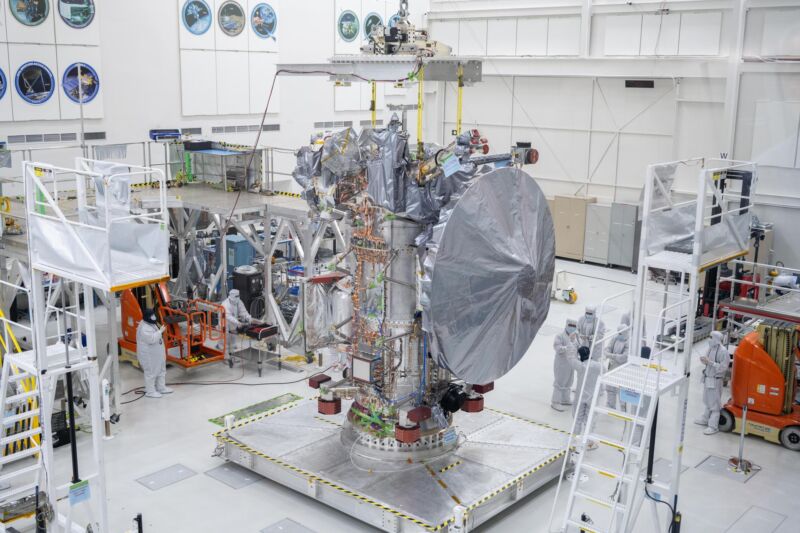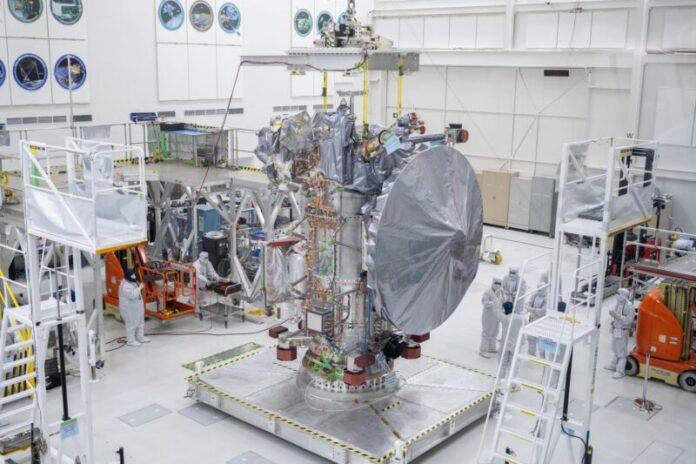
Enlarge / One of the final components added to the Europa Clipper spacecraft was the high-gain antenna, seen here during installation in August. (credit: NASA/JPL-Caltech)
KENNEDY SPACE CENTER, Fla.—The launch window for one of the most expensive robotic space missions in NASA's history opens one year from Tuesday. Coming in at $5 billion, Europa Clipper will try to help scientists answer a bold question commensurate with its eye-popping cost: Are there places below the surface of Jupiter’s icy moon, Europa, that could support life?
Europa is slightly smaller than Earth's Moon, and is significantly more interesting to scientists searching for life. The icy world harbors a vast global ocean of liquid water underneath a frozen crust. Clipper will sail past Europa nearly 50 times, coming as close as 16 miles (25 kilometers) from its icy surface to interrogate the moon with a sophisticated suite of nine instruments.
Jordan Evans, who leads the team developing Europa Clipper at NASA's Jet Propulsion Laboratory in California, told Ars on Tuesday the mission is on track to depart for Jupiter during a 21-day planetary launch window opening on October 10, 2024.
Read 29 remaining paragraphs | Comments
Ars Technica - All contentContinue reading/original-link]




